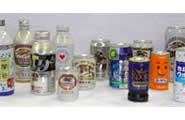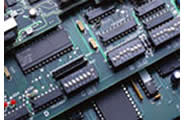Polymers/Resins/High Performance Chemicals
Epoxy ResinjER™

Characteristics
It's Mitsubishi Chemical's epoxy resin.
This epoxy resin is a thermosetting resin includes a reactive epoxy group at the end. A representative type called bisphenol A epoxy resin is formed by the condensation polymerization of bisphenol A and epichlorohydrin. This type has the structure shown below with various grades depending on the different numbers of repeating units (n=0,1,2,....)
In addition, to facilitate handling a low viscosity grade is made by adding reactive diluents. Also a solution grade with resin dissolved in a solvent is available.

When an epoxy resin is allowed to react with various curing agents, an infusible, insoluble, three-dimensional, hardened material is formed. The features listed below indicate how this high-performance, multipurpose resin can be used for a wide variety of applications.
- There is tremendous freedom to adapt the material properties to the specific application requirements by adding various modifying agents (fillers, flexibility agents, diluents.)
- Curing shrinkage is small. Dimensional stability is excellent.
- Excellent adhesion to metal, porcelain, concrete, etc.
- High mechanically strength.
- Excellent as an electrical insulator.
- Excellent flexibility.
- Excellent heat resistance.
- Excellent wear and abrasion resistance.
- Excellent chemical resistance, and moisture (water) resistance.
■ Types of Epoxy Resins
In addition to the basic bisphenol A resin mentioned above, other specialized resins are manufactured and sold to give the cured material specific property enhancements.Following are the main specialized resins
- Bisphenol F epoxy resin: Low viscosity makes it excellent to work with.
- Multifunctional epoxy resin: Cured material has outstanding thermal and chemical resistance.
- Flexible epoxy resin: The cured material's crack-resistance is improved.
- Brominated epoxy resin: The cured material is flame-retardant.
- Glycidyl ester epoxy resin: The cured material's tracking resistance is improved.
- High molecular weight epoxy resin (phenoxy resin): The cured coating has excellent machinery property.
- Biphenyl epoxy resin: The cured material has excellent heat resistance and low stress.
Either alone or in combination with bisphenol A epoxy resin, these special resins can give specific features to the cured product to satisfy application requirements.
Applications
Epoxy Resin Applications:
- Paints and coatings
- Electrical insulation materials
- Composite materials
- Civil-engineering and construction materials
- Adhesives
- Tools
- Other applications
■ Handling Precautions
A Japanese Ministry of Health, Labor, and Welfare toxicity study concluded that bisphenol A liquid epoxy resin and bisphenol F liquid epoxy resin are mutagenic. Therefore, when handling, it is necessary to follow the guidelines provided by the Ministry. In addition, as substances that can cause allergic dermatitis, official handling guidelines have been established by the Japanese Labor Standards Director and the Ministry of Health, Labor and Welfare. Similarly, precautions are needed in handling the curing agent. Especially amine-type curing agents can cause allergy-like dermatitis in people. In order to avoid direct contact, please use protective cream, gloves, goggles, and apron. Avoid inhalation of vapor and particulates by working in a well-ventilated area and working upwind of the material.
In the event of skin contact, avoid use of solvents, wipe the affected area with a dry cloth, wash thoroughly with soap and water, and then apply hand cream.
In the event of eye contact, flush eyes with water for more than 15 minutes, and then seek medical attention.
Refer to each product's data safety sheet (MSDS) for further details.
Mitsubishi Chemical strives to be a reliable supplier of high-quality jER™ epoxy resin. As part of this effort, we offer technical services to assist our customers with the appropriate use of the products as well as with development for new technical applications. Please contact us at the Specialty Chemicals Dept. for more information about product quality, processing techniques, or new applied technology for jER™ epoxy resins and curing agents.

Paints and Coatings Example:
Food and drink cans
Steel and aluminum
Inner surfaces, outer surfaces, lids.

Paints and Coatings Example:
Electrodeposition coating for
the first layer of paint on a car.

Electrical Insulation Materials Example:
Encapsulant, Laminated circuit board (green part),
Central processing unit (CPU) and memory chips (black chips),
Electrolytic capacitor
